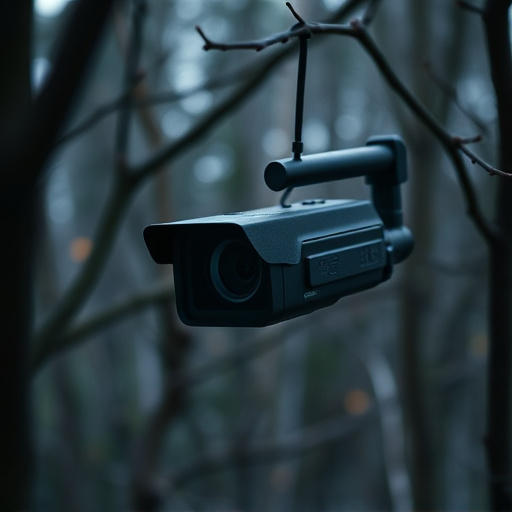Detecting small hidden cameras in bedrooms involves a blend of technology and expertise. Techniques like UV lighting, thermal imaging, and signal analysis uncover these micro-surveillance devices, crucial for modern privacy protection. Homeowners should stay informed about surveillance tech and tools to safeguard their spaces from intimate recording devices. Act promptly if suspicious, enhancing security with locks, curtains, or smart doorbells to deter future intrusions.
In today’s digital age, privacy concerns have never been more pressing. One emerging threat, often overlooked, is the presence of small hidden cameras in bedrooms. This article delves into the critical topic of microphone bug sweeping detection techniques for homes. We explore methods to identify these concealed devices and safeguard your personal space. Understanding the advanced techniques available and proactive steps you can take are essential to protecting your privacy from covert surveillance.
- Understanding Microphone Bug Sweeping
- Identifying Small Hidden Cameras in Bedrooms
- Advanced Detection Techniques at Home
- Safeguarding Your Privacy: What to Do Next
Understanding Microphone Bug Sweeping
Microphone bug sweeping, also known as audio surveillance detection, is a critical process aimed at identifying hidden listening devices, such as small hidden cameras for bedroom spaces. These tiny, often undetectable gadgets can pose significant privacy risks, capturing sensitive conversations and personal activities without consent. Understanding the techniques employed in microphone bug sweeping is essential for both homeowners and professionals ensuring secure environments.
The detection process involves a combination of advanced technology and human expertise. It includes meticulously searching for abnormal audio emissions, analyzing electronic signals, and utilizing specialized equipment to pinpoint hidden microphones or listening devices. By staying abreast of evolving surveillance technologies, experts can employ effective countermeasures against these clandestine bugs, providing peace of mind in homes and workplaces alike.
Identifying Small Hidden Cameras in Bedrooms
Identifying small hidden cameras in bedrooms is a critical aspect of modern security, as privacy invaders often employ sophisticated methods to record personal activities. These micro-cameras can be discreetly placed within everyday items like clocks, light switches, or even wall art, making them nearly invisible to the naked eye. Homeowners should remain vigilant and take proactive measures to detect such devices. One effective technique is to use specialized UV lighting, which can reveal hidden cameras as they often reflect light differently than regular objects.
Additionally, employing thermal imaging technology can be a game-changer in identifying heat signatures that indicate the presence of these small hidden cameras. By scanning rooms with thermal cameras, anomalies in temperature distribution may point to the location of covert recording devices. It’s essential for homeowners to familiarize themselves with the latest detection tools and stay informed about emerging trends in privacy invasion tactics to safeguard their personal spaces effectively.
Advanced Detection Techniques at Home
In today’s digital era, advanced detection techniques have emerged to help homeowners secure their spaces from unexpected intruders, including small hidden cameras for bedroom areas. Beyond traditional security systems, innovative tools like bug sweeping services offer a comprehensive approach to privacy protection. These services employ specialized equipment, such as thermal imaging and motion sensors, to detect even the smallest of hidden devices, ensuring no peeping toms go unnoticed.
By combining manual inspections with advanced technology, professionals can uncover covert surveillance equipment, including small hidden cameras strategically placed in bedrooms or other intimate settings. This proactive measure not only safeguards personal privacy but also instills a sense of security in homeowners, knowing their homes are protected from the prying eyes of unsanctioned observers.
Safeguarding Your Privacy: What to Do Next
If you suspect that your privacy is being invaded by small hidden cameras, like those often found in bedroom spaces, it’s crucial to act swiftly. The first step is to conduct a thorough search of your room, checking all possible locations where such devices could be concealed—from wall cracks to furniture crevices. Use specialized tools designed for bug sweeping if available, as these can detect even the smallest and most advanced hidden cameras.
Once you’ve confirmed the presence of these devices, it’s essential to document everything: take photos or videos as evidence. Then, report your findings to the appropriate authorities, who can help investigate and remove the unwanted surveillance equipment. Additionally, consider enhancing your home security by investing in better locks, privacy curtains, or smart doorbells to deter future intrusions.
Microphone bug sweeping and detecting small hidden cameras in your bedroom or home are critical steps to safeguard your privacy in today’s digital era. With advanced techniques like thermal imaging, RF detection, and audio analysis, you can identify and mitigate potential security risks effectively. Remember that staying proactive and informed is key; regularly update your home security measures and keep abreast of the latest tools and methods for bug sweeping. By taking these precautions, you can ensure a peaceful and secure living environment, free from unwanted surveillance.
